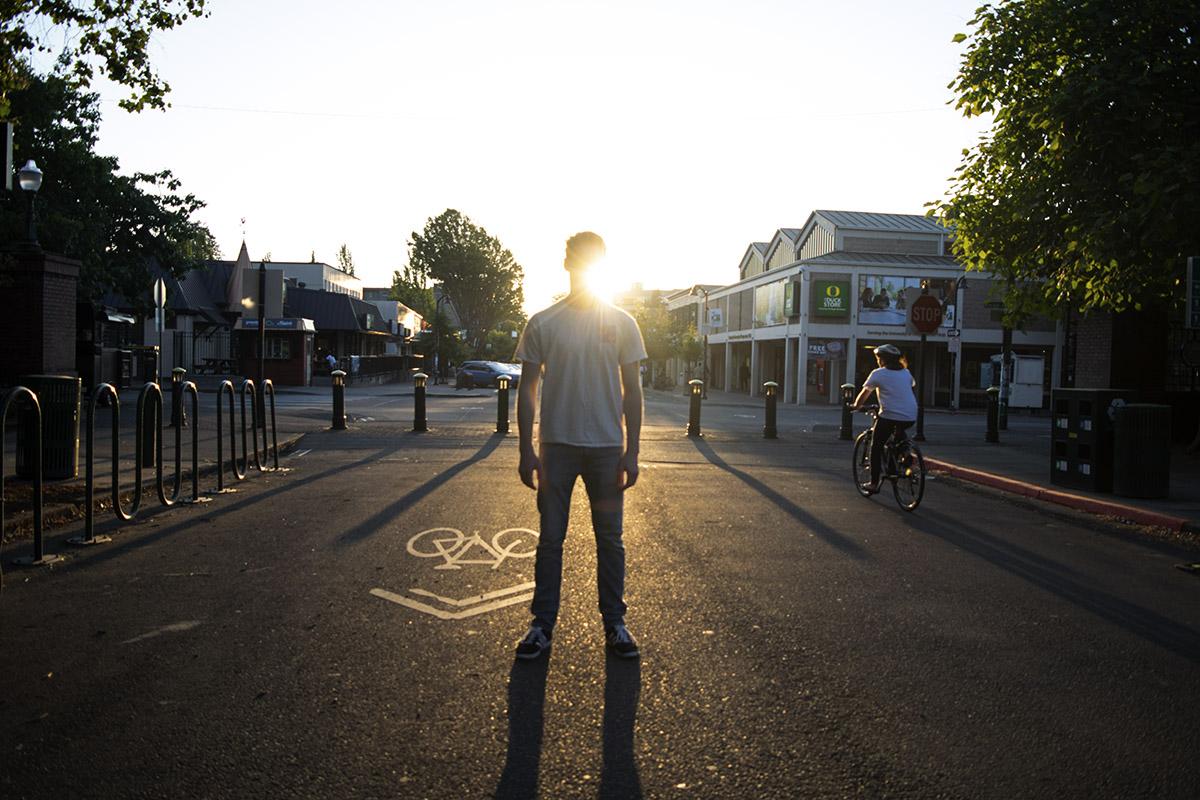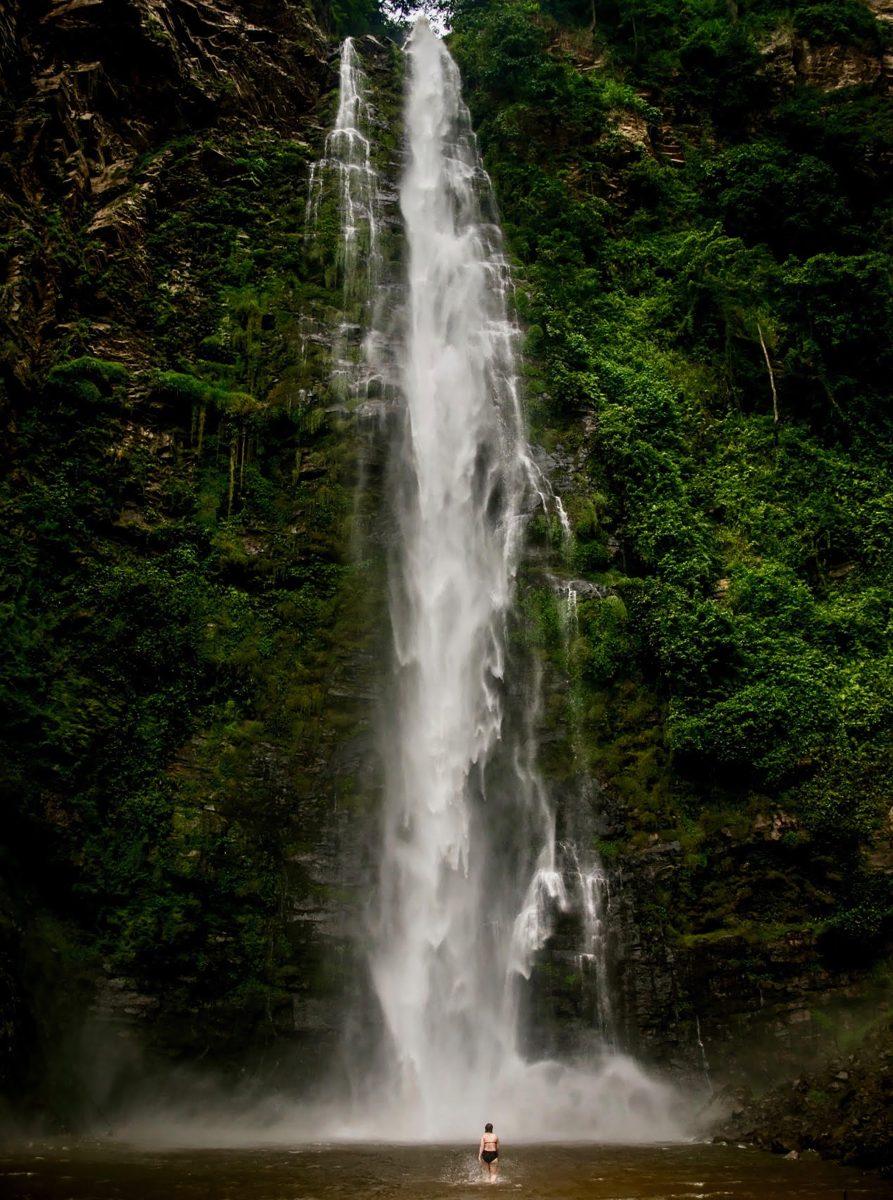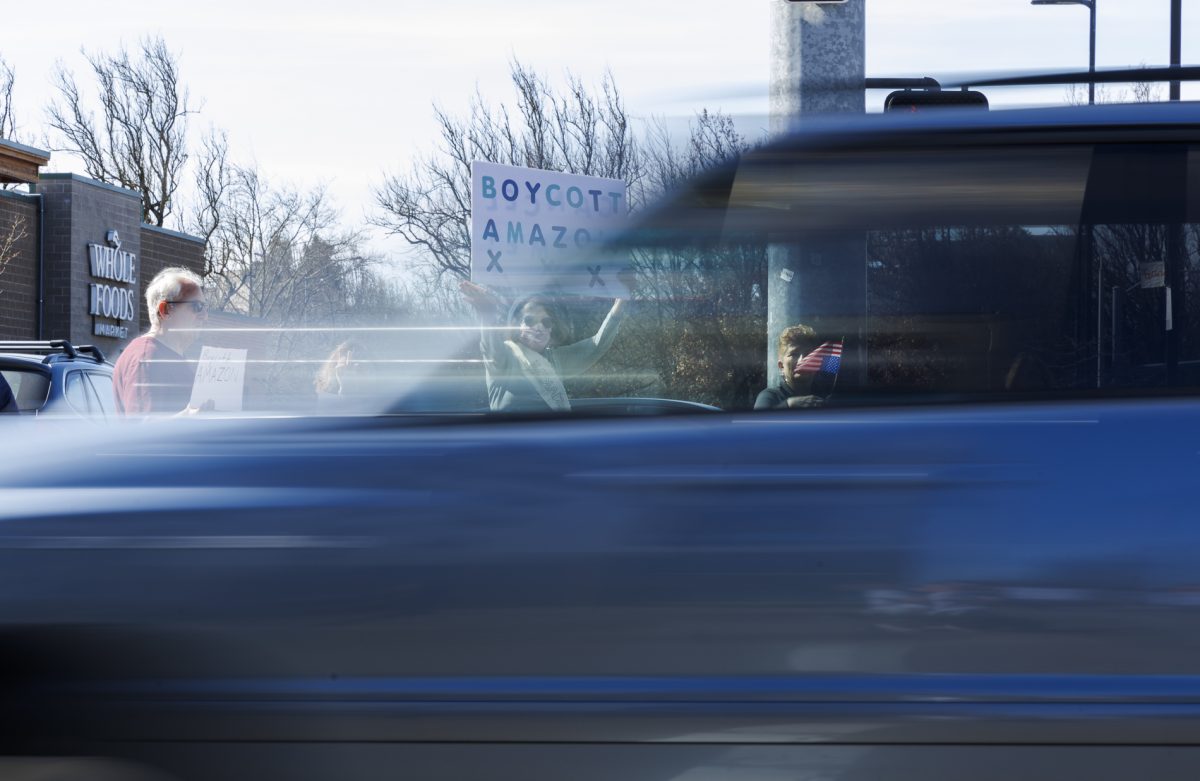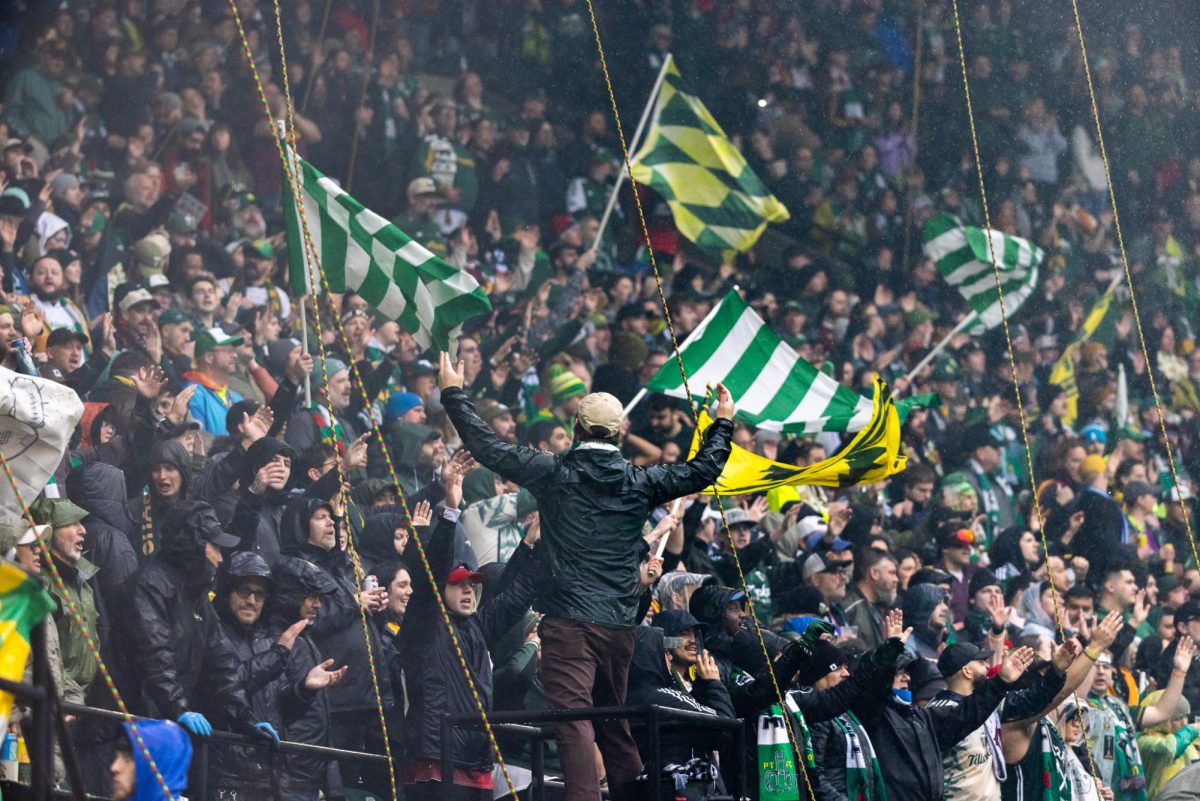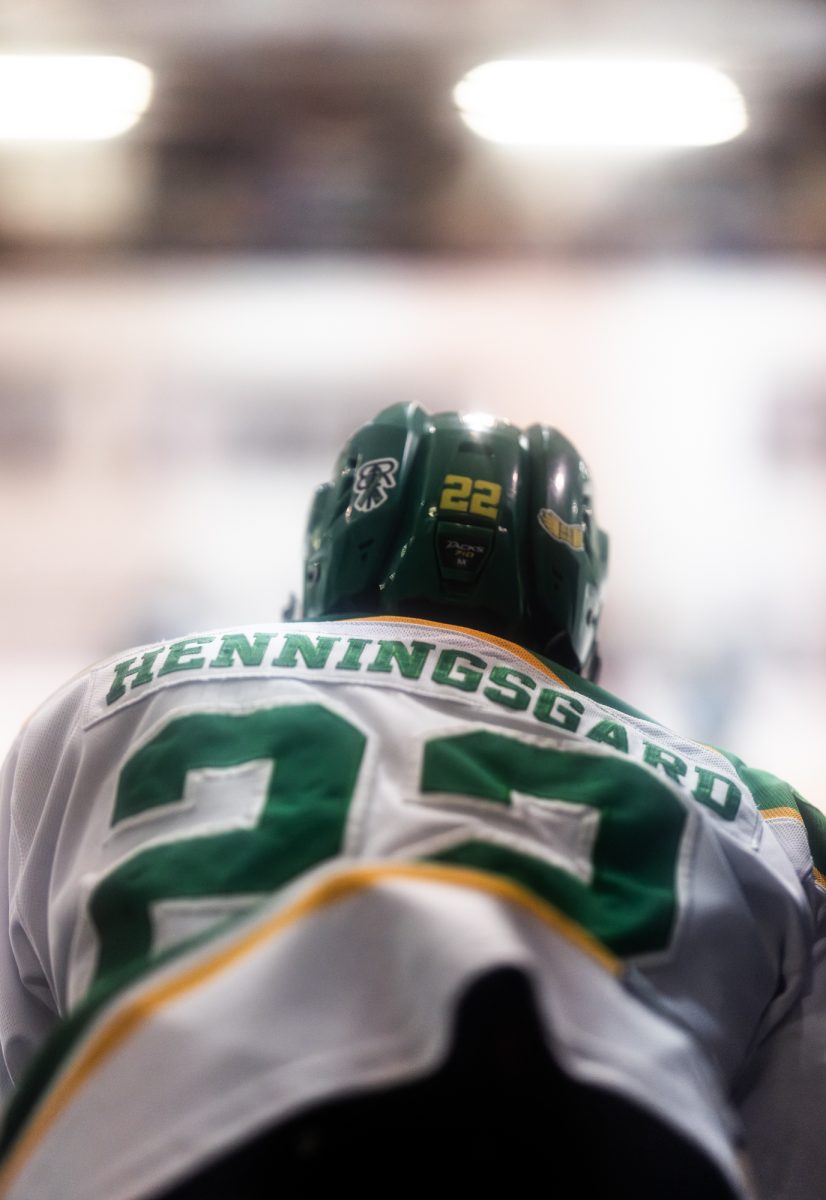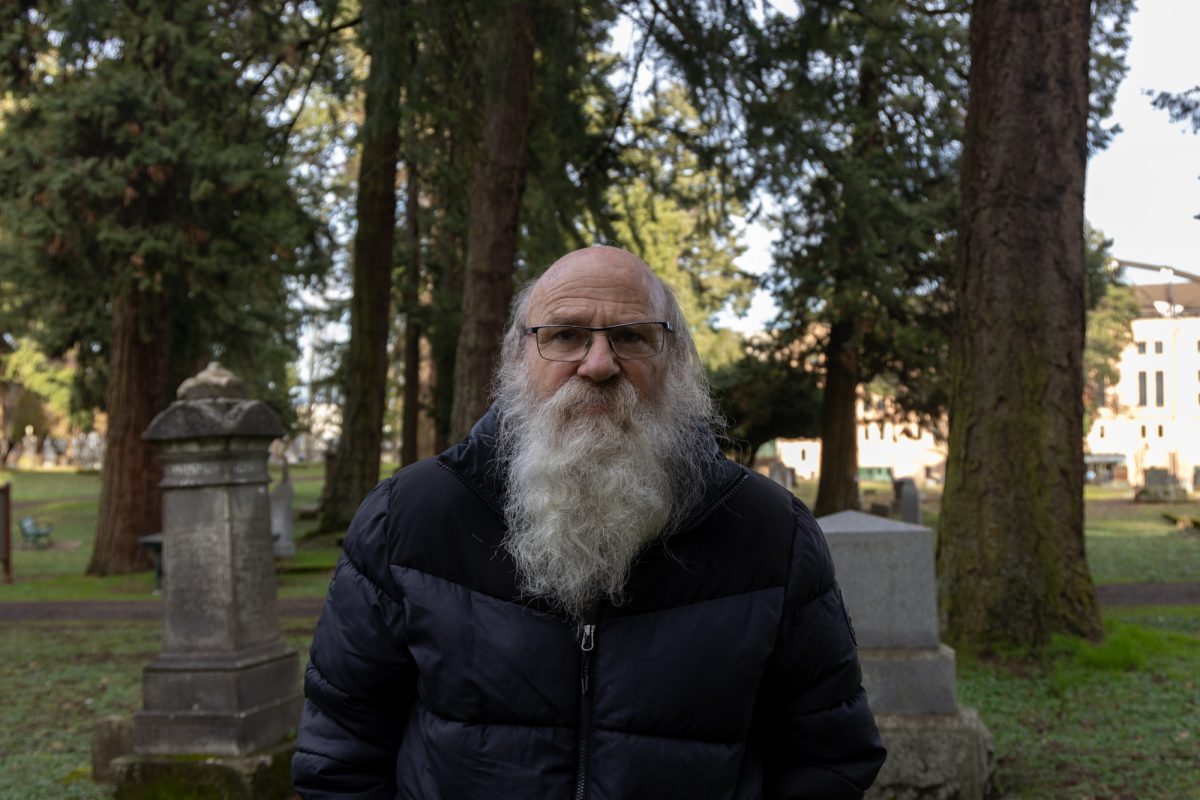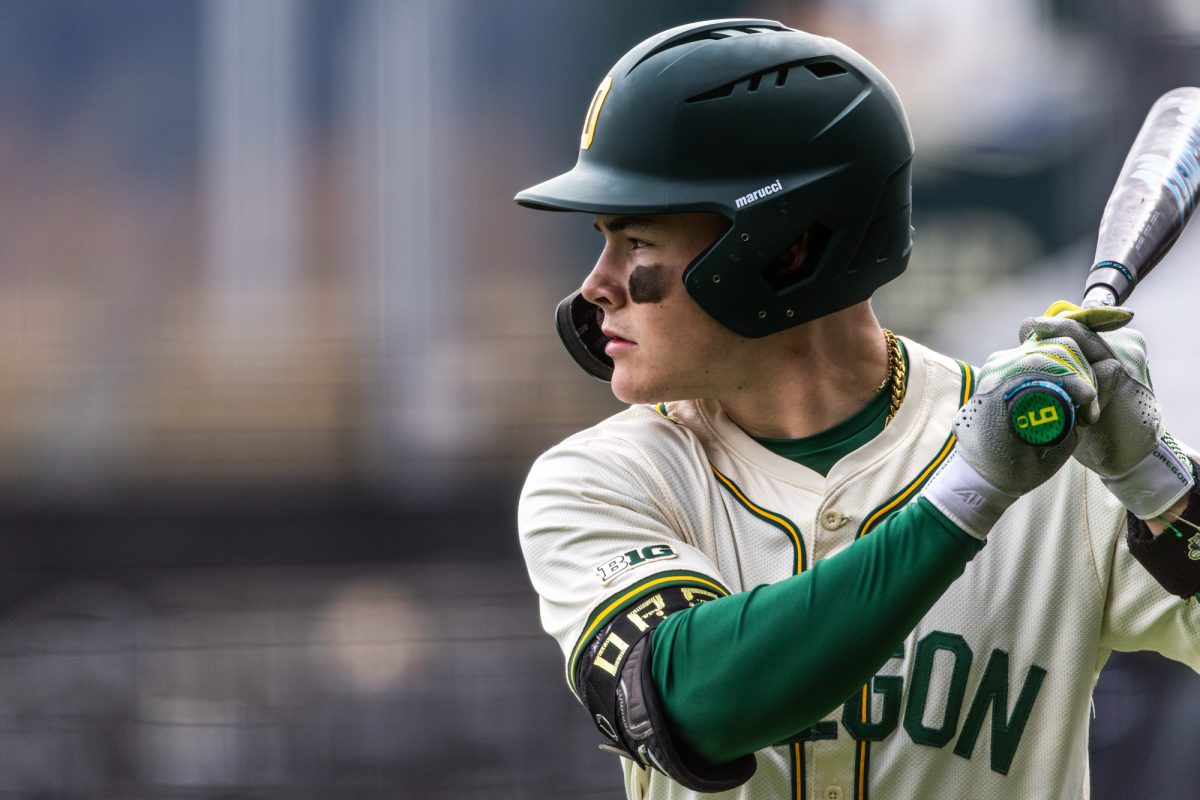Words and Photos by Sarah Northrop
Dark rooms, dark skies:
Behind black curtains, a metal basin sits among scattered jugs of chemicals, a row of enlargers and mismatched development supplies. On the outside of the darkened space, a red warning light switches on. There’s a darkroom in use. And I’m likely the one inside.
I find solace in the darkroom, often losing track of time with my sleeves and rain boots soaked in chemicals meant to bring film negatives to life. I stand, illuminated by faint, red safelights, hanging up print after print to dry. It’s cold, and the chemistry smells like vinegar and bleach. After a few hours, I resurface with a binder full of enlargements and eyes well-adjusted to Eugene’s dark winter sky.
Darkroom developing is an art form in its own right. It’s one process to shoot film photos, but the darkroom requires its own level of mastery. There’s more freedom to experiment in film photography than digital, and more often than not, failure in the darkroom gives way to serendipity. Light leaks and lens flares. Multiple exposures and chemical mishaps. Every step of the developing process leaves room for beautiful mistakes.
Darkroom techniques are various and only as limited as an artist’s creativity. I’ll fill a spray bottle with developer and watch as the image brightens into view, speckled onto the photo paper. Sometimes I’ll use a paintbrush to develop my photo, the uneven strokes painting light onto paper. There’s something sublime about being able to physically manipulate the way a negative carries over to print — something that connects the artist to the medium on a deeper level.
It is rare for me to encounter another artist in the darkroom, but when I do, I’m greeted by a sense of familiarity and camaraderie. We’ll share supplies and bounce ideas off each other that would have never occurred otherwise. It’s gratifying to be accompanied by another mind in a place that can sometimes feel so isolated. These encounters serve as a reminder that there exists a world of people who are similarly captivated by the magic of film and darkroom.
Creating community:
Jesiah Hallford is the president and founder of Eugene Darkroom Group, a nonprofit that is raising money for the intended construction of a central darkroom in Eugene. He wants Eugene to be a place that can be recognized for its film and darkroom community.
“There’s a lot of great artists, experts and teachers in this community that are really passionate about sharing their knowledge,” he says.
Hallford has a sentimental connection to film, having been surrounded by it since a young age. Hallford’s father worked in a photo lab, and Hallford went on to work for his school’s yearbook during the rise of digital photography. Despite its convenience and immediacy, he found himself frustrated with this ever-changing technology.
“There’s always some new fucking thing. Now it comes in a cube! Now it has an ‘i’ in front of it,” Hallford says. “I thought, ‘This is ridiculous and overwhelming,’ I feel like it’s a game and I’m never going to win.”
Hallford believes the reemergence of film has occurred because interest in film photography isn’t what died. Rather, the markets have kept up with digital trends, making film photography supplies become niche products.
“I don’t think people have stopped liking Polaroids and instant cameras, they just got rarer and hard to find and broken,” he says.
Film photography embodies reporting, journalism and documentary, while still maintaining itself as an art form. Hallford suggests the medium is not just an artist’s outlet for their expressions of the world, but how they see and understand it as well.
“It’s populist and accessible,” Hallford says. “Immigrants, poor people, women and queer people can get ahold of cameras and do photography and use the medium to speak about their lives in a real way.”
The dark arts:
What sets film apart is its ability to remain unchanging in the digital age. While digital tools are constantly advancing, film technologies that are decades old can still be used in modern day. Film’s timeless and physical qualities are part of what makes darkroom processing an everlasting practice.
The layers of physical manipulation, time, mechanics and chemistry that come with the darkroom do more for film artists than just make their images come to life.
“My practice in the darkroom teaches me patience, acceptance of failure and mistakes, and serendipity and subtlety,” Hallford says. “I feel like I can carry it with me through my life, keep working, keep developing, keep building.”
The physicality of darkroom practices initially intrigued University of Oregon student and photographer Allison Schukis to pursue film as an art. “There’s something really magical about working in the darkroom that just doesn’t come through with working digitally,” she says.
Schukis has been developing film since she was ten years old. She is thorough and meticulous every step of the way. She carefully mixes her darkroom chemistry and examines her expansive collection of different sized negatives. Tongs in hand, she fine-tunes the appearance of her prints. And, unlike myself, she does it all without landing a single drop or stain on her clothes.
As a photographer of both digital and film, I find myself trapped in limbo between two realms. Photography is about perceptions of the world — it’s about capturing memories and moments, balancing light and space. While a digital photo exists as pixels, a film photo is a physical manifestation of light. A film photo tethers the viewer to a photographer’s perceived universe that existed for a fleeting moment. A reproduction of the world within the moment the camera clicks. A film photo has a soul, as if the world in that moment still exists inside it.
More: Allison Schukis and the magic of working in the darkroom
Film photographer Allison Schukis loads a film negative into an enlarger and prepares to develop it into a print. (Sarah Northrop)




![Words and Photos by Sarah Northrop Dark rooms, dark skies: Behind black curtains, a metal basin sits among scattered jugs of chemicals, a row of enlargers and mismatched development supplies. On the outside of the darkened space, a red warning light switches on. There’s a darkroom in use. And I’m […]](https://dailyemerald.com/wp-content/uploads/2018/04/a88cc0af91f19341e0e8afe516d39192.jpg)
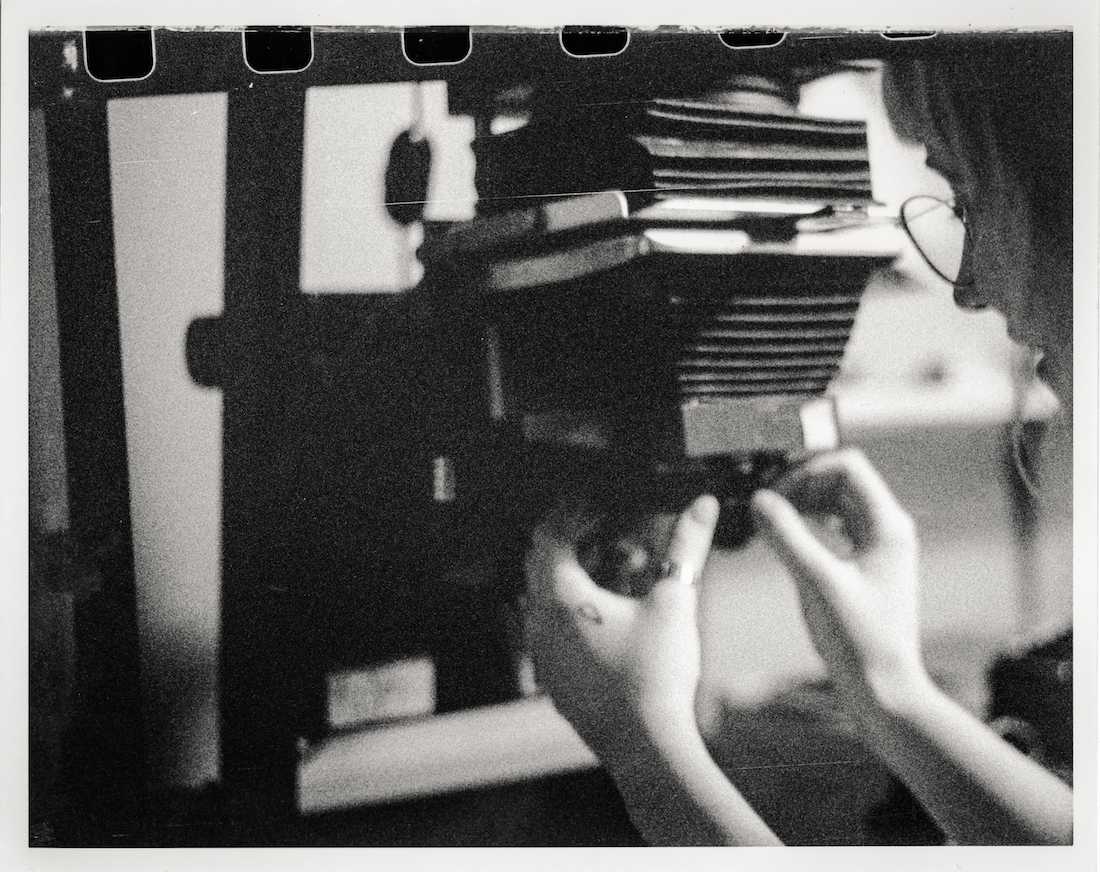
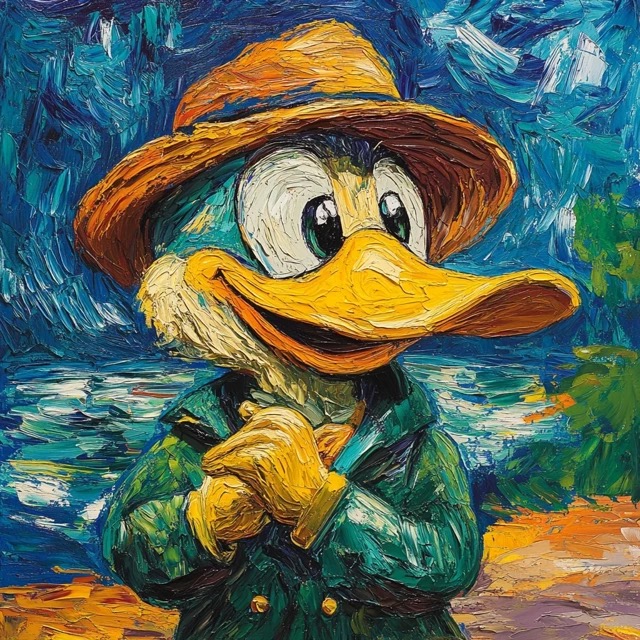


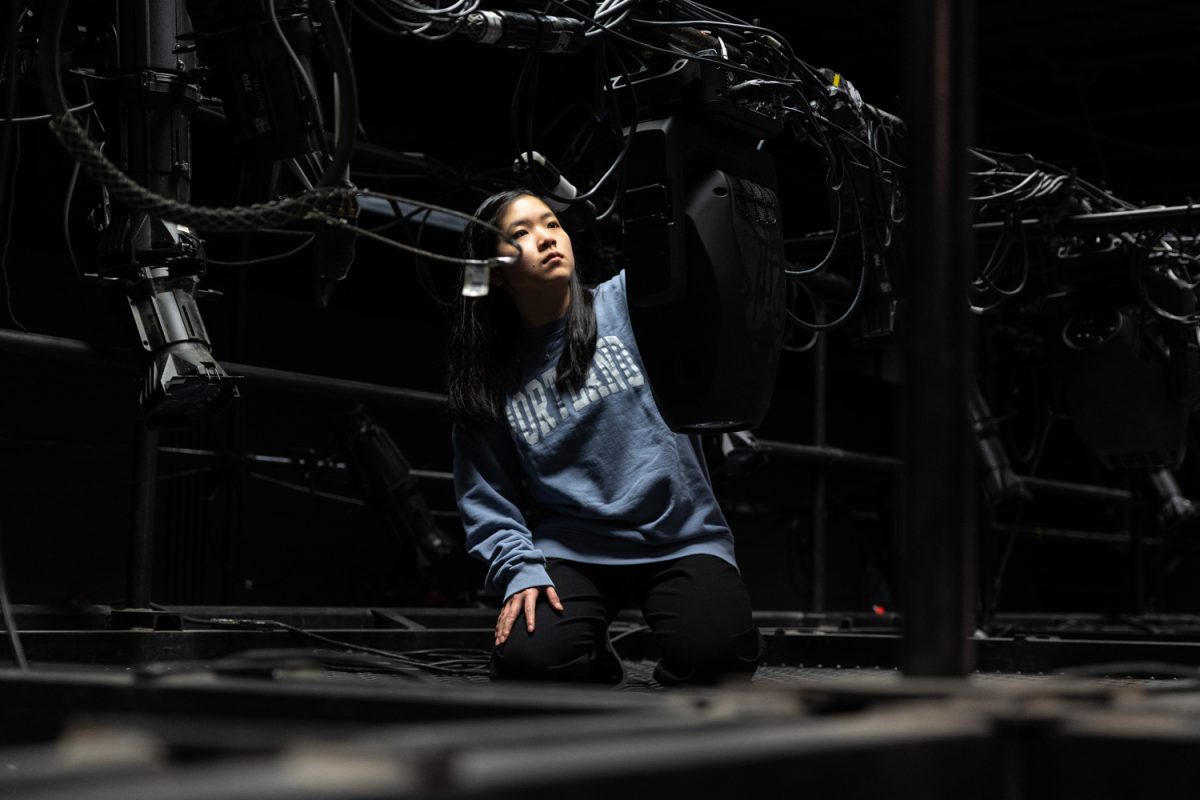
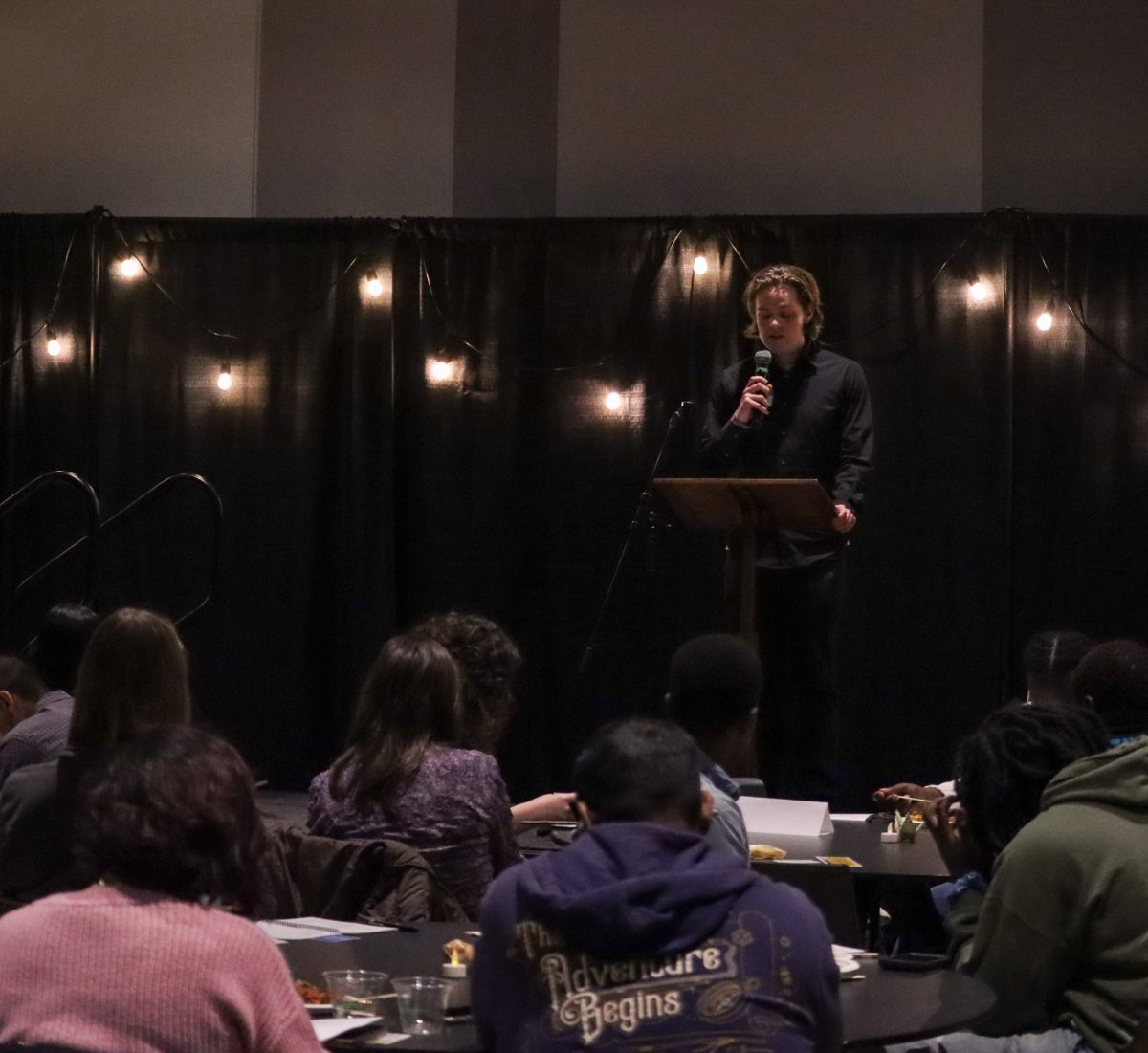
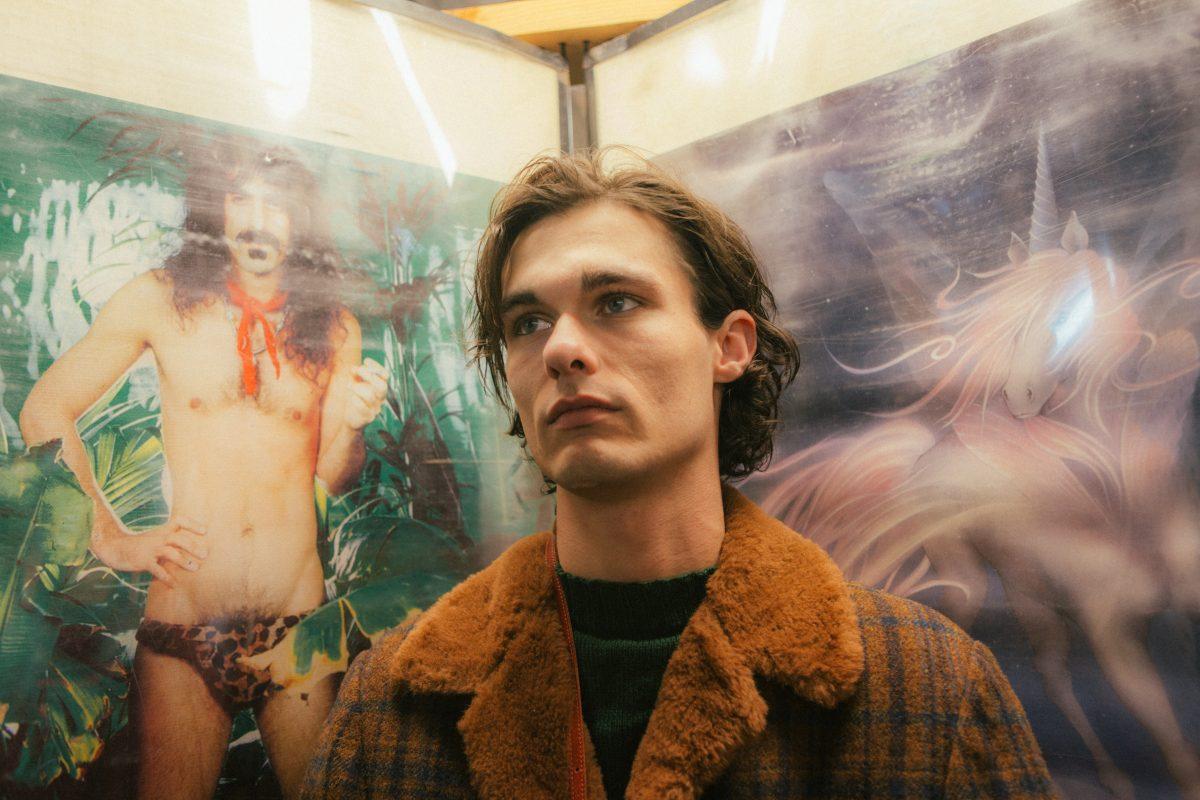
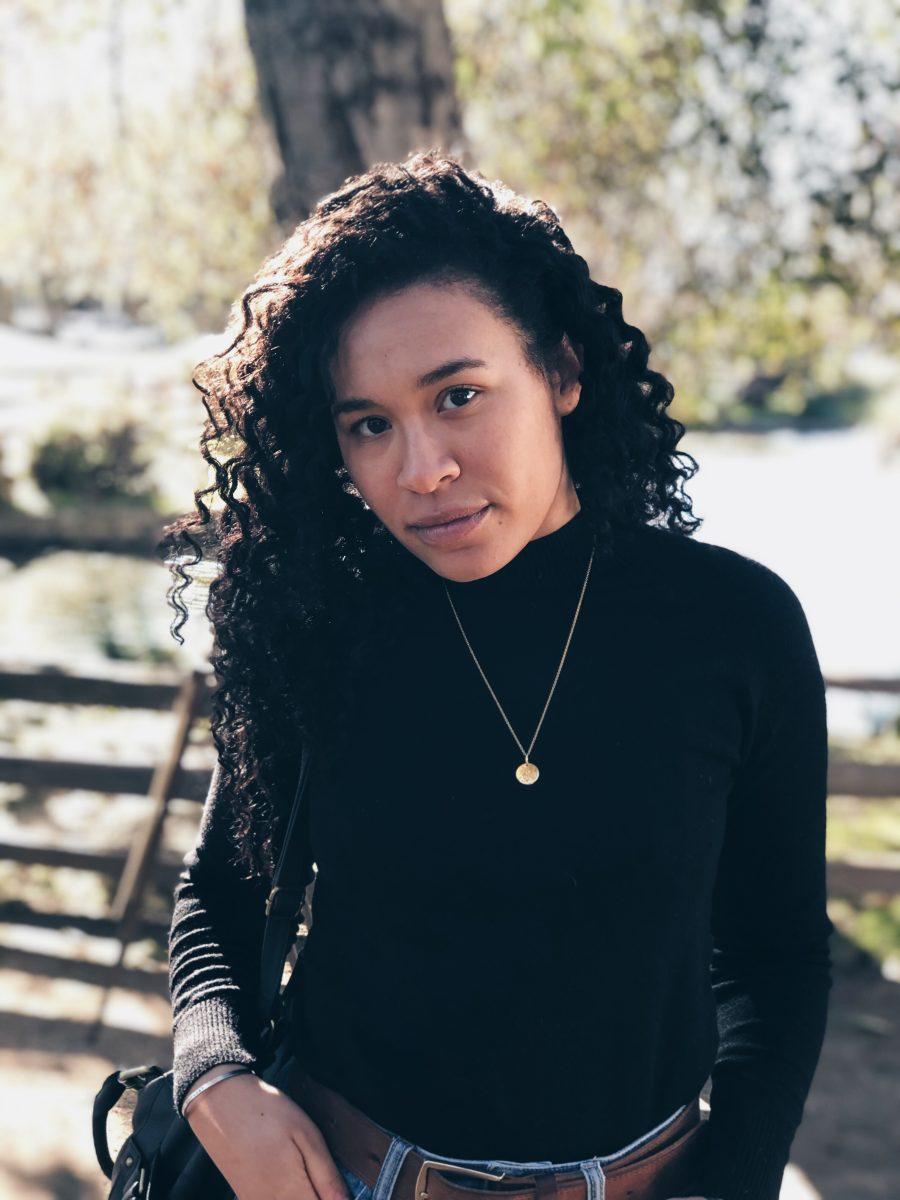
![Words | Renata S. Geraldo Art | Maddy Wignall   Sex trafficking takes on many different forms. Women from poor families fall victim and are kidnapped or sold into prostitution. In the United States, prostitution and trafficking take a different form. Trafficking happens through coercion and manipulation; a much subtler […]](https://dailyemerald.com/wp-content/uploads/2018/10/8ad948459029f9a809f9628092dca222.png)
